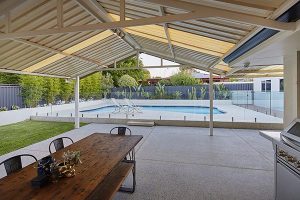Does your lawn have brown patches? Is your lawn patchy and inconsistent, with some areas green and others dying?
We have found many homeowners just don’t know how to fix a brown patchy lawn. You’re probably thinking it has a lawn beetle infestation or some other disease. While this is possible, we’ve found the issue usually lies in the following areas:
Lack of Water
If your lawn is reticulated, then current watering restrictions allow for up to a 10mm standard ‘drink’ on your watering days. Aside from the obvious broken sprinkler, here are the most common reasons your lawn might be brown or patchy due to lack of water.
Sprinkler run times.
Did you know that different sprinklers have different run times to apply a 10mm ‘drink’? Some slow application sprinklers can even be run for up to 60 minutes according to the Water Corporations regulations! Check how long you should be running your sprinklers for.
One common issue we have seen is rotary, gear drive and dripline sprinklers being run for only 10 or 15 minutes. This would be the equivalent of running your spray nozzles for 5 minutes which just isn’t enough in our hot summer weather! Make sure you are running your sprinklers for the correct amount of time to give the lawn a10mm drink on your watering days!
Sprinkler layout
Because sprinklers do not cover their own bases (their arc throws away from the sprinkler after all) all sprinklers should be set out for ‘head-to-head’ coverage. Head-to-head coverage is where each sprinkler throws all the way to the base of the opposite and adjacent sprinkler and vice versa. By setting out your irrigation in this way you achieve an even, overlapping application of water. Head-to-head coverage is what the sprinkler run times are based on. If your sprinklers are set out for tip-to-tip reticulation, where the arcs meet in the middle and don’t overlap, then you will overwater these areas and underwater the areas with no overlap which isn’t water-wise. You should consider changing the layout of your sprinklers (this can easily be done keeping your existing pipework and just extending it as required) to achieve head to head coverage.
The grass has grown so long that it is blocking the sprinklers
This ties into the maintenance, but if the lawn is left too long between mows the blades of grass can get so tall that it blocks the spray at the sprinkler and you can end up with green patches around each sprinkler and dead patches everywhere else where the water isn’t reaching. The simple solution here is to mow your grass more regularly, otherwise consider installing a taller pop up such as a 100mm (usually people have 50 or 80mm pop ups which can be too small) so that it can pop up higher than the grass and still get good coverage.
Lawn Maintenance
Proper maintenance is key in achieving a lush green lawn. Here are some common mistakes people can make when maintaining their grass that can lead to brown patches in their lawn.
- Mowing height and frequency. It’s important to mow your lawn at the correct height. Many people mow too low and scalp the lawn leading to instant dead patches, or too high and the light cant penetrate far enough, leading to a brown lawn when mowed. Different varieties of lawn have different mowing heights, so it’s important to do your research. You should be mowing your lawn at least fortnightly in summer, preferably weekly for best results. Never take off more than 30% of the blades in any one mow, as this will stress the lawn and can lead to dead patches. If you’re getting brown patches after mowing then you should mow more frequently, take off less at a time, and aim for the right mowing height for your variety of grass.
- If your lawn is looking a sickly shade of light green or yellow, then you may not be fertilising correctly. All lawns should be regularly fertilised with a high-quality lawn fertiliser. Many lawn fertilisers are cheap and do not deliver the right nutrients to the lawn. We recommend using a granular, slow release fertiliser such as Eco Prime Emerald for best results. We also recommend regularly using Seasol as this promotes healthy root growth and beneficial soil micro-organisms. Seasol can also help aid in recovering damaged areas of your lawn if the roots are still alive.
Please be careful to water in fertilisers as they can burn the lawn badly if applied incorrectly.
Hydrophobic Soil
Perth is notorious for having sandy, hydrophobic soils. If your lawn has gone brown or developed dry patches, the water you are applying may be running off due to the soil being hydrophobic. We recommend applying a wetting agent to your lawn which will help your soil absorb the water you are applying to it.
If you are currently running standard spray type sprinklers, you might want to look at installing rotary nozzles. Rotary nozzles apply the water up to 4 times as slowly which gives the water a chance to soak in where it falls. This is opposed to the standard sprays which apply a lot of water quite quickly and can lead to a patchy lawn, with some areas getting too much and others too little.
The other benefit of the rotary nozzles is that they have a heavy droplet which penetrates better through the wind than a spray does. This means less misting and water on your driveway or the road, and more water on the lawn where you want it.
It’s simple to convert a station of sprays over to rotary nozzles, but make sure all the nozzles on the same zone are the same. You can’t mix and match sprays and rotary nozzles as they require different run times!
So, there you have it, if you follow this guide you should see your lawn become much healthier and your brown patches begin to disappear.
Our knowledgeable team of lawn and reticulation experts are available to assist you so you can achieve a lush green lawn and a beautiful outdoor space. Reach out to us on (08) 6244 3388 for a no-obligation chat about how we can help you.
Need Us To Help With Your Garden?


